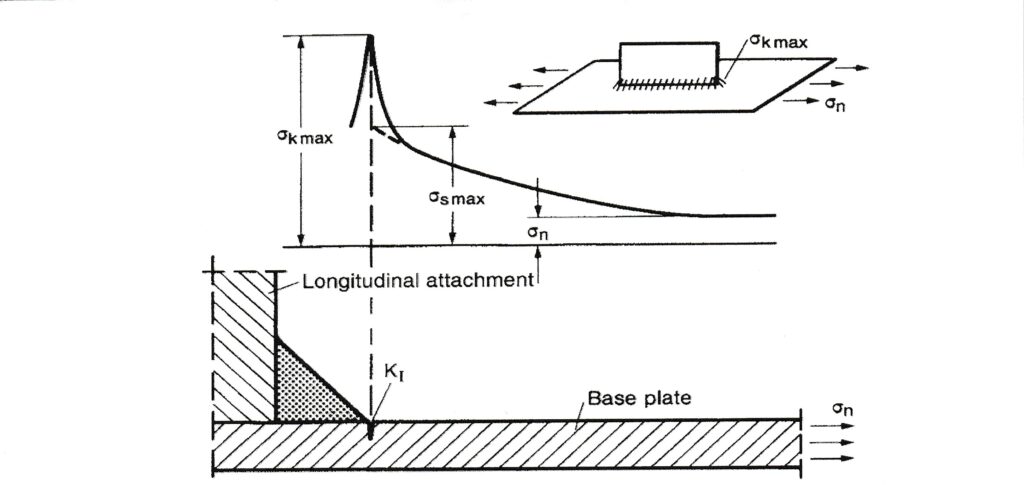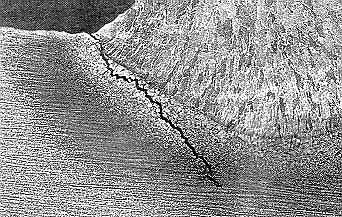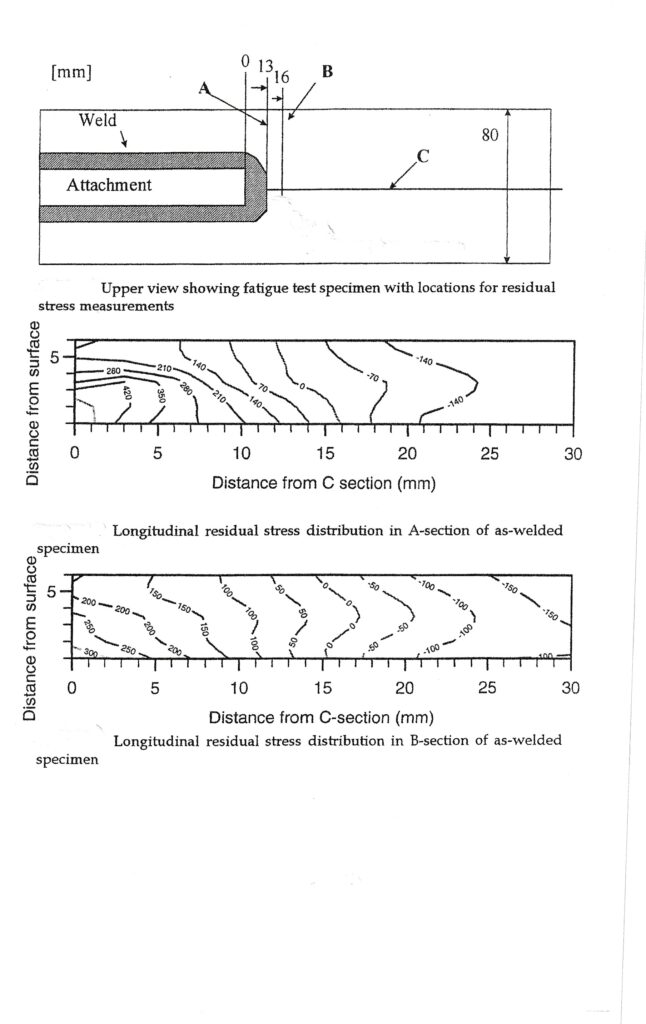Fatigue Life of Welds
Fatigue Life of Welds
Fatigue strength of welded joints
The allowable design stress of structures subjected to fluctuating service load is nearly always governed by the fatigue strength of welded joints, particularly any fillet weld present. The poor fatigue strength of such joints, which in the as welded condition is also independent of parent steel strength , can be attributed to the conjoint effect of three factors:
- a. local stress concentration due to geometric discontinuity
- b. the presence of sharp crack like flaws such as undercuts and slag intrusions introduced by the welding process
- c. the presence of large tensile residual stresses in the weld metal and the surrounding heat affected zone (HAZ)

Global stress concentration

Weld flaws


Residual stresses

Fatigue life improvement techniques
The fatigue life improvement methods are grouped into two classes: weld geometry methods and residual stress methods. The former methods are designed to reduce the stress concentrations due to the weld geometry and remove or reduce crack-like flaws (defects) at the weld toe. The latter methods introduce compressive residual stresses in the regions where the fatigue cracking is likely to occur. Grinding (either whole profile grinding or weld toe grinding), peening (needle peening or hammer peening), tungsten inert gas (TIG) dressing, and ultrasonic impact technique (UP), are currently used to improve the fatigue life of welded joints.
However, ultrasonic peening is the only technique which effectively reduce the local stress concentration and simultaneously replace tensile residual stresses by beneficial compressive residual stresses.

Ultrasonic Peening

